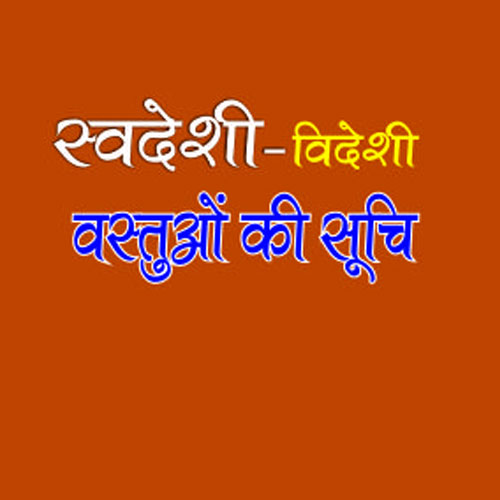
Pleasant Change in Health Landscape: Government Taking Greater Responsibility
Union Budget 2025-26 allocates expenditure of Rs 103280 crores on health and family welfare, Ayush and health research. If we see over last 11 years there has been an impressive, 8.3 times increase in expenditure on health and family welfare, Ayush and health research, from Rs 12482 crore in 2014-15 to Rs 103280 crores in Budget 2025-26. It's notable that during this period the size of Union Budget has increased by hardly 2.8 times. Ten years ago, public expenditure on health was nearly one percent of GDP. In 1990-91, total public expenditure on health (which included medical and public health, family welfare, water supply and sanitation, nutrition, child and disabled welfare) was 2.36 per cent of GDP. Although, public education and health institutions were never excellent, even in the pre-LPG era, these facilities were largely kept at the heart of government policy making. With the advent of privatization, under LPG policies, people were left to the mercy of market forces for education and health. By 2013-14, public expenditure on health had come down to its low of one percent of GDP. This resulted into deterioration in public health facilities. From 2014-15, public health services have improved significantly, making it possible to reduce out of pocket expenditure by the people. We see that in 2004, the total health expenditure as a percentage of the GDP was 4.2 percent, and out of this, 2.59 was contributed by the private out of pocket expenditure. The concern was that the public expenditure was ridiculously low, below 1 percent of the country's GDP. Studies have highlighted severe negative impacts of high out of pocket expenditures on socio economic status of households; especially it drastically affected people belonging to economically poorer sections of society. Further many people in middle income category were also forcibly impoverished. It puts poorer people into vicious cycle of poverty. At the macroeconomic level, it undermined the government efforts in eradicating poverty and brings the general economic welfare at low level.
NCDs have also significantly contributed to the high out of pocket expenditure as a percentage of either total health expenditure or the Gross Domestic Products (GDP) of country. Thanks to positive and significant intervention by the government in the last one decade, despite greater incidence of NCDs, out of pocket expenditure has been coming down continuously, which is giving a big sigh of relief to the masses in general and poor in particular. Till 2013-14 out of pocket expenditure remained high at nearly 2.5 percent. The out of pocket expenditure as a percentage of the GDP was 2.58 in 2004-05, remained at 2.43, even in 2013-14, despite tall claims of the then government about public health care. With the augmentation of the public health expenditure, we see a gradual decline in the private out of pocket health expenditure. However, the more rapid decline in out of pocket expenditure as a percentage of the GDP was seen after 2015-16. From 2.32 percent of GDP in 2015-16, it declined to 1.54 percent in 2019-20, 1.66 in 20-21, and 1.55 in 21-22.
However, a major relief for the common man is that the governments in India have started sharing the burden of health expenditure to address ever increasing need to take care of health needs. The government expenditure on health as a percentage of the GDP has been increasing as it was 0.22 % of the India's GDP in 1950-51, 0.81 in 1975-76, 0.96 in 1990-91, 0.88 in 1995-96, 0.96 in 2005-06. Between 2007-08 to 2013-14, somewhat this figure moved close to 1 percent of GDP. However, the consistent increase has been seen after 2015-16 as it was 1.02 of the GDP in 2015-16, 1.17 in 2016-17 and 1.35 in 17-18, 1.28 in 18-19,1.35 in 19-20,1.6 in 20-21, and 1.84 in 21-22. In the case of India, the introduction of Ayushman Bharat has helped significantly in reducing private out-of-pocket healthcare expenditure. The Ayushman Bharat scheme consists of two segments- one related to upgradation and creation of health infrastructure known as Pradhan Mantri-Ayushman Bharat Health Infrastructure Mission (PM-ABHIM) and the other towards providing health insurance known as Ayushman Bharat-Pradhan Mantri Jan Arogya Yojana (AB PM-JAY). By December 2024, a total of 1.75 lakh Ayushman Arogya Mandirs (AAMs) were either established or upgraded from existing Primary Health Centres (PHCs) and Sub-Health Centres (SHCs).
The Ayushman Bharat-Pradhan Mantri Jan Arogya Yojana (AB PM-JAY), aims to cover health expenses upto to 5 lakh for secondary and tertiary health expenses. Initially its coverage was limited to social and economically backward groups of the society. But, later on, the ambit of this scheme is expanded to all people who are aged 70 years or above. The Government of India (GoI) had allocated Rs 1998 crore in 2018, which gradually increased upto Rs 6185 crore in 2022, which has benefited millions of people. Besides this, the GOI has also put a price ceiling for the Aayushman Card holders to hospitals, whereas, the actual price for non-card holders is much greater. Moreover, the cost of health care in India is much cheaper in comparison to the western countries, that is why India has emerged as a preferred destination for medical tourism. It is true that during these years we have strived towards providing equitable health care by strengthening public health infrastructure, public insurance based treatment, provision of generic medicines and diagnostic services at affordable prices, promoting traditional knowledge system of wellness. Along with this we need to strengthen our medical industry so that new cutting edge innovations and technologies are developed in this field that can handle the need of evolving nature of diseases across and globally. it can contribute to our economy in many ways. It will provide a healthier work force, help in reducing poverty, as well as help in mobilizing foreign exchange. Thus, in this endeavour, all tiers of government, namely local, state and union government, need to work in synergy.


